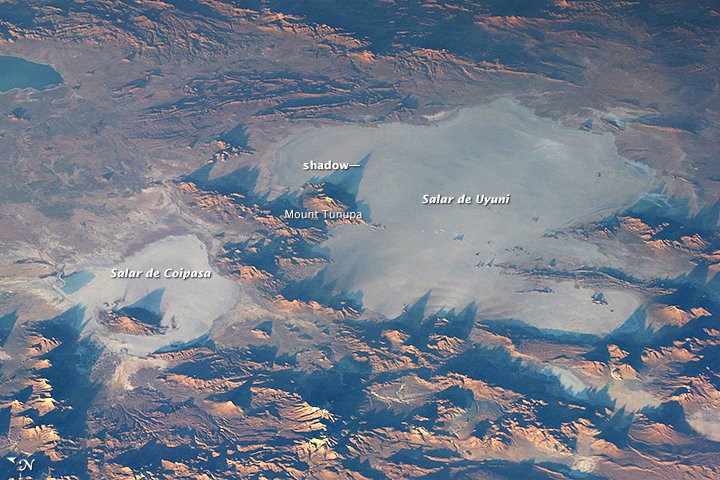
May 14, 2019
Research Highlight
Sequence of a High Altitude Polyextremophile
Gene content and methylation patterns in Halorubrum sp. strain BOL3-1.

The largest salar (salt flat or playa) in the world, Salar de Uyuni, is located within the Altiplano of Bolivia. Covering 10,582 square kilometers, the mineral-crusted salar is about the same size as the “Big Island” of Hawaii.Image credit: NASA, Astronaut photograph ISS040-E-7443.
Reserachers have reported sequence analysis results of a polyextremophilic microbe isolated from the Salar de Uyuni in Bolivia. The organism, Halorubrum sp. strain BOL3-1, is considered a polyextremophile because it is able to live under multiple conditions that are considered ‘extreme’ for most life on Earth. The Salar de Uyuni is located in the Andes of southwest Bolivia. This remnant of a prehistoric lake is now the largest salt flat in the world, covering an area of almost 11,000 square kilometers. Microorganisms that survive in this high-altitude, saline environment can provide insight into the mechanisms that life as we know it might use to survive in similar environments on other worlds.
The research team used single-molecule real-time sequencing to study gene content and methylation patterns in Halorubrum sp. strain BOL3-1. The results have been entered into the Haloarchaeal Genomes Database (http://halo.umbc.edu).
The study, “Genome Sequence and Methylation Patterns of Halorubrum sp. Strain BOL3-1, the First Haloarchaeon Isolated and Cultured from Salar de Uyuni, Bolivia,” was published in the journal Microbiology Resource Announcements. The work was supported by NASA Astrobiology through the Exobiology Program.